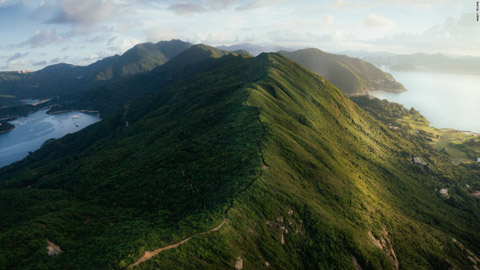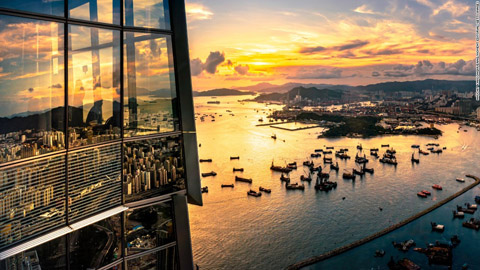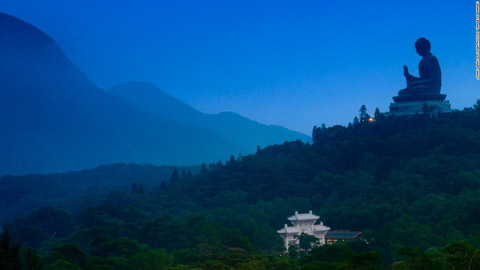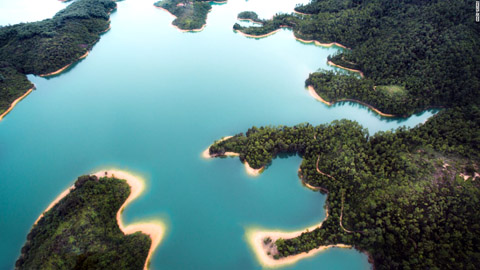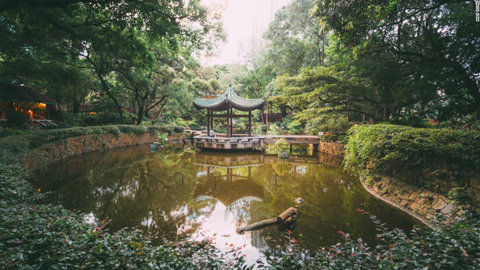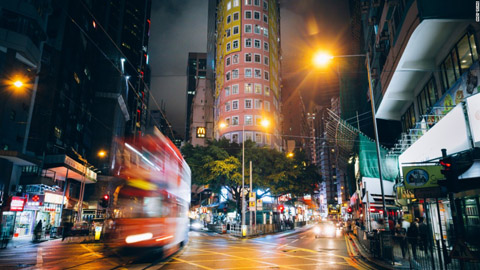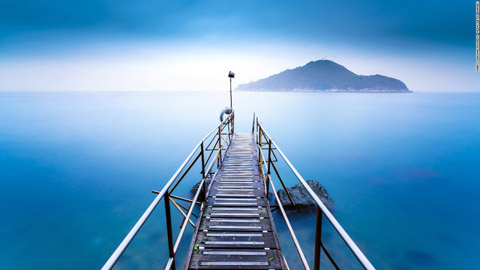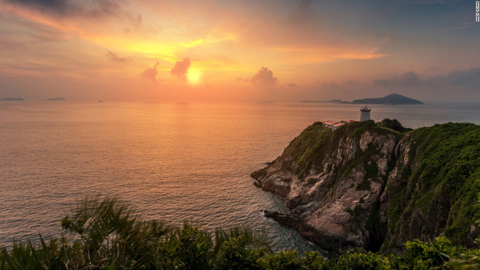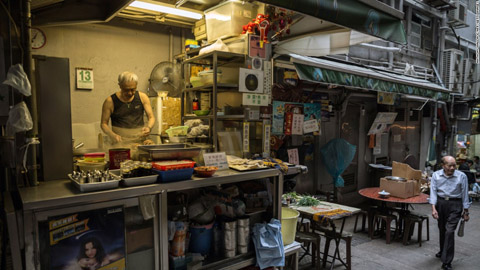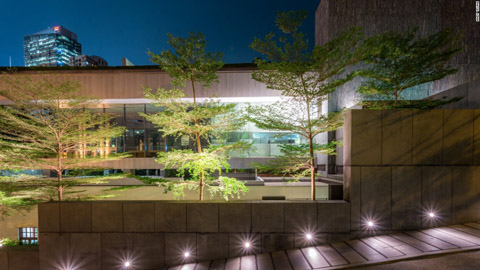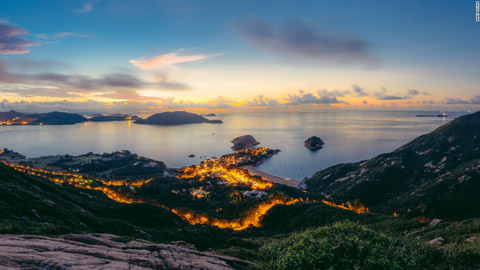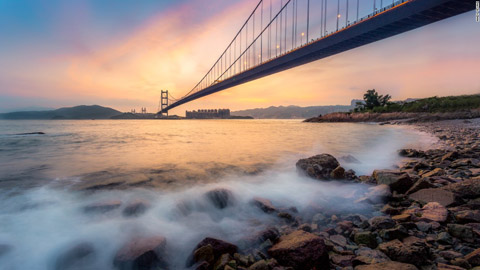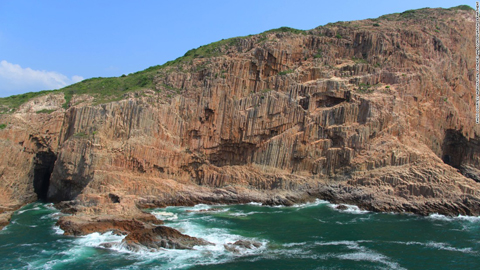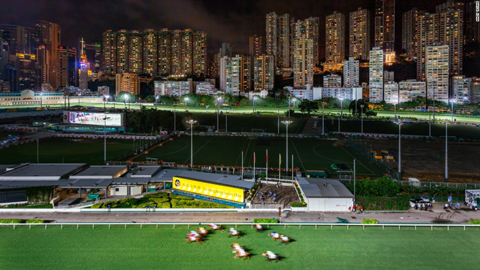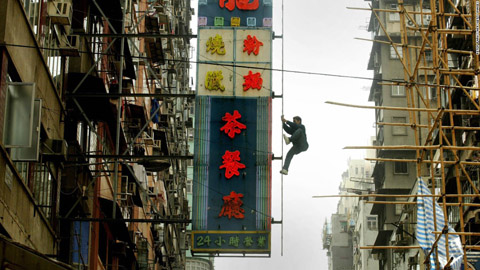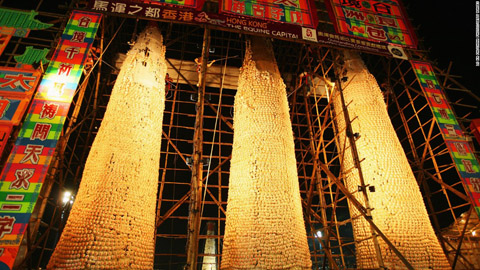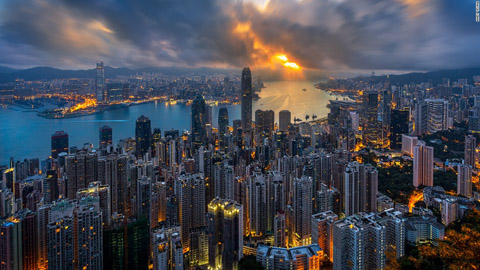Overview
“The handiest and most marvellous city I ever saw”, wrote the natural historian William Hornaday of
Singapore in 1885, “as well planned and carefully executed as though built entirely by one man. It is like a big desk, full of drawers and pigeonholes, where everything has its place, and can always be found in it.
” This succinct appraisal seems apt even now, despite the tiny island’s transformation from an endearingly chaotic colonial port, one that embodied the exoticism of the East, into a pristine, futuristic shrine to consumerism. In the process, Singapore acquired a reputation, largely deserved, for soullessness, but these days the place has taken on a more relaxed and intriguing character, one that achieves a healthier balance between Westernized modernity and the city-state’s traditional cultures and street life.
The foundation for Singapore’s prosperity was its designation as a tax-free port by Sir Stamford Raffles, who set up a British trading post here in 1819. The port plays a key role in the economy to this day, though the island now also thrives on high-tech industry, financial services and tourism, all bolstered by a super-efficient infrastructure. All these achievements were accompanied by a major dose of paternalism, with the populace accepting heavy-handed management by the state of most aspects of life in exchange for levels of affluence that would have seemed unimaginable a couple of generations ago. Thus it is that since independence much of the population has been resettled from downtown slums and outlying kampongs (villages) into new towns, and the city’s old quarters have seen historic buildings and streets bulldozed to make way for shopping malls.
Yet although Singapore lacks much of the personality of some Southeast Asian cities, it has more than enough captivating places to visit, from elegant temples to fragrant medicinal shops to grand colonial buildings. Much of Singapore’s fascination springs from its multicultural population, a mixture of Chinese, Malay and Indian, which can make a short walk across town feel like a hop from one country to another, and whose mouthwatering cuisines are a major highlight of any visit. The city also rejoices in a clutch of fine historical museums that offer a much-needed perspective on the many successes and sacrifices that made Singapore what it is today, plus a lively arts scene featuring no shortage of international talent and local creativity.
Planning your trip to Singapore
Everything you need to plan where to go and what to do.
When to go
Deciding the best time to visit Singapore can be difficult, but the climate is simplicity itself: hot and humid. The island experiences two monsoons, from the southwest (May–Sept) and the northeast (Nov–March), the latter picking up plenty of moisture from the South China Sea. Consequently, December and January are usually the rainiest months, though it can be wet at any time of year; during the southwest monsoon, for example, there are often predawn squally showers sweeping across from the Straits of Malacca.
The inter-monsoon months of April and October have a tendency to be especially stifling, due to the lack of breezes. At least it’s easy enough to prepare for Singapore’s weather – have sun cream and an umbrella with you at all times.

Shaped like a diamond, Singapore’s main island is 42km from east to west and 23km from north to south, compact enough to explore in just a few days. The southern corner of the diamond is home to the main part of the city – “downtown”, or just “town” to locals – which centres on the Singapore River, the creek where Raffles first landed on the island in 1819.
After a full day’s sightseeing, it’s undoubtedly the top place to unwind, lined with former warehouses that are now home to buzzing restaurants and bars.
The main draws for visitors are the city’s historic ethnic enclaves, particularly Little India, a couple of kilometres north of the river. Packed with gaudy Hindu temples, curry houses and stores selling exotic produce and spices, the district retains much of its original character, as does nearby Arab Street, dominated by the golden domes of the Sultan Mosque. South of the river,Chinatown is a little sanitized though it still has a number of appealing shrines; an immaculately restored Chinese mansion, the Baba House; plus a heritage centre documenting the hardships experienced by generations of Chinese migrants in Singapore. Wherever you wander in these old quarters, you’ll see rows of the city’s characteristic shop houses; compact townhouse-like buildings that are the island’s traditional architectural hallmark.
Of course, the British left their distinctive imprint on the island as well, most visibly just north of the Singapore River in the Colonial District, around whose grand Neoclassical buildings – including City Hall, Parliament House and the famed Raffles Hotel – the island’s British residents used to promenade. Also here are the excellent National Museum, showcasing Singapore’s history and culture, and Fort Canning Hill, a lush park that’s home to a few historic remains. All these are constantly being upstaged, however, by the newest part of town, Marina Bay, built on reclaimed land around a man-made reservoir into which the Singapore River now drains. Around it are arrayed the three-towered Marina Bay Sands casino resort, the spiky-roofed Esplanade – Theatres on the Bay arts centre and Gardens by the Bay, with its two huge arch-shaped conservatories.
Nearly as modern as Marina Bay, but steeped in tradition as far as Singaporean consumerism is concerned is Orchard Road, a parade of shopping malls that begins just a few minutes’ walk inland from the Colonial District. Just beyond is the finest park on the whole island, the Botanic Gardens, featuring a little bit of everything that makes Singapore such a verdant city, though most tourists make a beeline for the ravishing orchid section.
Downtown Singapore is probably where you’ll spend most of your time, but the rest of the state has its attractions too. North of downtown is the island’s last remaining pocket of primary rainforest, the
Bukit Timah Nature Reserve, and the splendid
zoo, where the animals are confined in naturalistic enclosures rather than cages. There’s more fauna of the avian kind on show in the west of the island at the excellent
Jurong Bird Park, while eastern Singapore is home to some sandy beaches and a museum recalling the infamous
Changi Prison, where so many soldiers lost their lives in World War II. Among the many smaller islands and islets that lie within
Singapore waters, the only one that is close to being a must-see is
Sentosa. Linked to the main island by causeway and cable car, it boasts Southeast Asia’s only
Universal Studios theme park and several slick beach hotels.
Explore Singapore
The Colonial District
North of the old mouth of the
Singapore River is what might be termed Singapore’s Colonial District, peppered with venerable reminders of British rule set back from the vast lawn that is the
Padang. The area still feels like the centrepiece of downtown, even though modern edifices in the surroundings constantly pull focus from it – notably the towers of Marina Bay Sands and the Financial District, away to the south, and the Esplanade – Theatres on the Bay complex to the northeast.
Despite the district’s historical associations, there are not that many high-profile sights. Chief among these are the excellent National Museum and Peranakan Museum, both nestling beneath verdant Fort Canning Park – itself worth a look, as are the dignified St Andrew’s Cathedral and the diminutive Armenian Church of St Gregory the Illuminator. By far the district’s most famous building, however, is the grand old Raffles Hotel.

While Little India is memorable for its fragrances, it’s the vibrant colours of the shops of the Arab Quarter that stick in the memory. Textile stores and outlets selling Persian carpets are the most prominent, but you’ll also see leather, perfumes, jewellery and baskets for sale. It’s easy to spend a couple of hours weaving in and out of the stores, but don’t expect a quiet window-shopping session – some traders are old hands at drawing you into conversation and before you know it, you’ll be loaded up with sarongs, baskets and leather bags.
After signing his dubious treaty with the newly installed “Sultan” Hussein Mohammed Shah, Raffles allotted the area to the sultan and designated the land around it as a Muslim settlement.
Soon the zone was attracting Malays, Sumatrans and Javanese, as well as traders from what is now eastern Yemen, and the area is now commonly referred to as Arab Street. Today, Singapore’s Arab community, descended from those Yemeni traders, is thought to number around fifteen thousand, though, having intermarried with the rest of Singapore society and being resident in no particular area, they are not distinctive by appearance or locale.
Like Little India, the area remains one of the most atmospheric pockets of old
Singapore, despite the fact that its Islamic character has been diluted over the years as gentrification has started to take hold. Now it’s the schizophrenia of the place that appeals: rubbing shoulders with the
Sultan Mosque, traditional fabric stores and old-style curry houses are brash Middle Eastern restaurants and a peppering of alternative boutiques and shops selling crafts and curios.

Of all the old districts of Singapore, the most charismatic has to be Little India. Here Indian pop music blares from shops, the air is perfumed with incense, spices and jasmine garlands, Hindu women promenade in bright saris, a wealth of restaurants serve up superior curries – and there are a couple of busy temples to visit, too.
Though the remaining shophouses are fast being touched up from the same pastel paintbox as that which restored Chinatown to its present cuteness, the results seem to work better in an Indian context.
The original occupants of this convenient downtown niche were Europeans and Eurasians who established country houses here, and for whom a racecourse was built in the 1840s on the site of today’s Farrer Park. Many of the roads in Little India started out as private tracks leading to these houses, and their names – Dunlop, Cuff, Desker, Norris – recall these early colonial settlers. Only when Indian-run brick kilns began to operate here did a markedly Indian community start to evolve. Indians have featured prominently in the development of Singapore, though not always out of choice: from 1825 onwards, convicts were transported from the subcontinent and by the 1840s there were more than a thousand Indian prisoners labouring on buildings such as St Andrew’s Cathedral and the Istana. Today, migrant Tamil and Bengali men labour to build the island’s MRT stations, shopping malls and villas, and on weekends they descend on Little India in their thousands, making the place look like downtown Chennai or Calcutta after a major cricket match.
The district’s backbone is Serangoon Road, dating from 1822 and hence one of the island’s oldest roadways. Its southwestern end is a kaleidoscopic of Indian life, packed with restaurants and shops selling everything from nose studs and ankle bracelets to incense sticks and kumkum powder (used to make the red dot Hindus wear on their foreheads). Here you might even spot a parrot-wielding fortune-teller – you tell the man your name, he passes your name onto his feathered partner, and the bird then picks out a card with your fortune on it. To the southeast, stretching as far as Jalan Besar, is a tight knot of roads that’s good for exploration. Parallel to Serangoon Road is Race Course Road, at whose far end are a couple of noteworthy temples.
Chinatown

The two square kilometres of Chinatown, west and south of the Singapore River, were never a Chinese enclave in what is, after all, a Chinese-majority country, but they did once represent the focal point of the island’s Chinese life and culture. More so than the other old quarters, however, Chinatown has seen large-scale redevelopment and become a bit of a mishmash.
Even so, a wander through the surviving nineteenth-century streets still unearths musty and atmospheric temples and clan associations, and you might hear the rattle of a game of mahjong being played.
The area was first earmarked for Chinese settlement by Raffles, who decided in 1819 that Singapore’s communities should be segregated. As immigrants poured in, the land southwest of the river took shape as a place where new arrivals from China, mostly from Fujian (Hokkien) and Guangdong (Canton) provinces and to a lesser extent Hainan Island, would have found temples, shops with familiar products and, most importantly, kongsis – clan associations that helped them find lodgings and work as small traders and coolies.
This was one of the most colourful districts of old
Singapore, but after independence the government chose to grapple with its tumbledown slums by embarking upon a redevelopment campaign that saw whole streets razed. Someone with an unimpeachable insight into those times, one Lee Kuan Yew, is quoted thus in the area’s Singapore City Gallery: “In our rush to rebuild
Singapore, we knocked down many old and quaint buildings. Then we realized that we were destroying a valuable part of our cultural heritage, that we were demolishing what tourists found attractive.” Not until the 1980s did the remaining shophouses and other period buildings begin to be conserved, though restoration has often rendered them improbably perfect.
Eating
Along with shopping, eating ranks as the national pastime of Singaporeans, and a mind-boggling number of food outlets on just about every street cater to this obsession. One of the joys of the local eating scene is its distinctive and affordable street food, featuring Chinese and Indian dishes you won’t find in China or India, served up in myriad hawker centres and food courts, as is great Malay and Indonesian food.
Also worth discovering is Nonya cooking, a hybrid of Chinese and Malay cooking styles developed by the Peranakan community. Western food of all kinds is plentiful too, though it tends to be pricier than other cuisines from Asia, which are equally available. Quite a few of the more run-of-the-mill restaurants swing both ways by offering both Western and Asian dishes, and there’s no shortage of upmarket places serving a fusion of the two.
- Markets and supermarkets
- Table manners
- Street ice cream
- Hawker and kopitiam food
- Indian foodchevron_right
- Malay and Indonesian food
- Chinese food
- Peranakan food
Downtown Singapore is best explored on foot and is compact enough to be tackled this way: for example, Orchard Road is only just over 2km end to end, and it’s a similar distance from the Padang to the middle of Chinatown. Of course you’ll need a high tolerance for muggy heat to put in the legwork, and tourists tend instead to rely on the underground MRT trains.
At some point you may also end up taking buses, which are just as efficient as the trains but a little bewildering, such is the profusion of routes. Both trains and buses are reasonably priced, as are taxis.
For public transport information, contact either SBS Transit (1800 287 2727,
sbstransit.com.sg) – historically a bus company, though it’s now respon- sible for two MRT lines – or SMRT (1800 336 8900,
smrt.com.sg), which runs the bulk of the MRT network and has some bus services of its own.
Singapore offers an excellent range of cultural events in all genres, drawing on both Asian and Western traditions, and even on a brief visit it’s hard not to notice how much money has been invested in the arts. Prime downtown property has been turned over to arts organizations in areas like Waterloo Street and Little India, and prestige venues like Theatres on the Bay bring in world-class performers – at top-dollar prices.
This isn’t to say that all is hunky-dory: questions remain over whether creativity is truly valued when censorship lingers, if not as overtly as in the 1970s and 1980s, then in terms of there being well-established red lines concerning party politics, ethnicity and religion which no one dare cross. More cynically, some say that support for the arts is a way to keep
Singapore attractive to expats and its own sometimes restive middle class.
Choice and convenience make the
Singapore shopping experience a rewarding one, but the island’s affluence and strong currency mean most things are priced at Western levels. Perhaps the best time to bargain-hunt is during the Great Singapore Sale (from late May to late July;
wgreatsingaporesale.com.sg), when prices are marked down across the island.
Unsurprisingly, Orchard Road boasts the biggest cluster of malls, bulging with designer names. Malls elsewhere tend to be more informal; the most interesting ones in Chinatown are like multistorey markets, home to a few traditional outlets stocking Chinese foodstuffs, medicines, instruments and porcelain. Singapore’s remaining shophouses are worthy of attention too, as many are still home to independent stores selling books, jewellery, souvenirs and so on.
